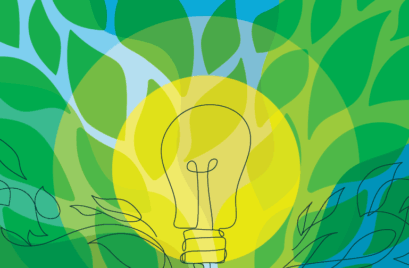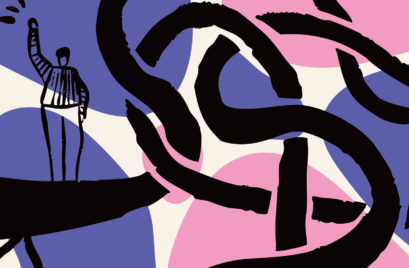
Are you climbing the ladder, spinning your wheels, or up the creek without a paddle?
The use of simple analogies in business is widespread. They help us quickly grasp and communicate feelings, concepts, and processes because we all ‘get it’ — it’s obvious how these ideas connect. But there is one hidden power to ‘analogical thinking’ that is still underappreciated.
When we go beyond making such obvious connections and search for deeper connections between even seemingly random items, such as sneakers and a Formula 1 car, we can stimulate creativity and innovation. This becomes especially powerful in conditions of high ambiguity.
What is Ambiguity?
We are increasingly confounded by ambiguity in business. Ambiguity is a lack of clarity about the meaning and implications of events or situations. This happens when there is a lack of recurrent patterns, with unknown cause-effect relations. For this reason, ambiguous settings leave us feeling confused, with everyone interpreting things differently, risking misalignment in teams.
Ambiguity differs from uncertainty, which refers to an inability to predict the probability of specific outcomes. For example: We encounter uncertainty when we introduce a new product to market that fits within an existing produce category, such as introducing a new type of instant coffee. We have a good idea of the target market, who the competitors are, and what the business model looks like, but can’t exactly predict what will happen. In uncertain settings, we can readily form expectations about the future by looking at the history in the same ‘domain’ – what did it look like the last time a new instant coffee brand was introduced?
In comparison, we encounter ambiguity when we create an entirely new market category. We have no idea about what features customers value, how much they are willing to pay for them, and who the competitors are. A recent example of this is in cold brew coffee. While cold brew is not necessarily a new thing, its commercialisation resulted in a new product category, and with it came new price points, new ways of packaging, and new competitors.
Broader shocks in our environment are plunging us into ambiguity far more regularly. The COVID-19 pandemic is an obvious example of how an external change can upend our understanding of cause and effect, and result in multiple different interpretations of what is changing, where we are now, and where we are going.
When we face ambiguity (versus uncertainty), we are unable to learn from historical events, patterns, and data in the same domain.
Analogically speaking, we need to think “outside of the box”.
Analogy: A Light in the Dark of Ambiguity
Analogy helps us think outside of our immediate domain to make sense of ambiguity.
As David Epstein explains in his book Range, “analogical thinking takes the new and makes it familiar or takes the familiar and puts it in a new light, and allows humans to reason through problems they have never seen in unfamiliar contexts”.
Analogies allow us to develop and apply stories and frameworks across diverse areas to build ideas about establishing possible cause-effect relationships, by looking further afield. This is especially potent when we are faced with ‘ill-structured’ or ‘wicked’ problems.
Revisiting our cold-brew example: when this product first emerged, it was difficult to see how cold-brew coffee could be produced, distributed, branded, and marketed by looking at traditional coffee markets. Starbucks used analogical thinking and looked further afield, applying craft beer processes to their cold brew coffee. Their baristas pour from a tap, where coffee is mixed with nitrogen to deliver what they call “an entirely new cold coffee experience.”
This example demonstrates how analogy helps us wade through ambiguity and communicate new products in familiar ways.
Analogy Through The Ages
History is cluttered with the power of analogy to bring new ideas to life under ambiguity:
- Merrill Lynch, used the supermarket as an analogy to create a “financial supermarket”, providing a one-stop-shop for retail banking, insurance products credit cards, and even real-estate services.
- Toys R Us aspired to be “the supermarket of toys”.
- Staples drew inspiration from Toys R Us, with the goal to be “the Toys R Us of office supplies”.
- The Agile working methodology “scrum” was inspired by a comparison between a relay race, where groups work linearly with fixed hand-offs, to a rugby team, where the team works together as a coherent unit throughout the whole project.
Go Wide, Dig Deep
The more ambiguous the context, the further outside of our current setting we should go to look for analogies. Deep analogical thinking happens when we identify and draw upon conceptual similarities across multiple domains and scenarios that seem to have little in common on the surface.
Back in the early 2000s, the designers of Nike’s running shoe, “Nike SHOX”, looked to the suspension technologies applied to Formula 1 racing cars to design their show cushioning. Think about how much higher the potential for innovation is here, compared to if Nike simply drew inspiration from the cushioning concepts already used in other running shoes.
Drawing upon obvious analogies can be helpful but can also limit innovation and lead to missed opportunities. For example, the aeroplane was widely believed to be impossible before the Wright brothers took flight, as engineers were preoccupied with the “obvious” analogies of birds.
Harnessing the Power of Analogy
To use an analogy here, analogical thinking is a “Darwinian” exercise in creativity. In creative thinking, our first idea is rarely our best idea. We should therefore strive to think of as many analogies as possible before selecting the most useful ones (akin to survival of the fittest).
Moreover, the creativity potential of any single analogy depends on the distance between the area from which it is drawn (e.g. Formula 1) to the area in which it is applied (e.g. shoes).
We can therefore get the most out of analogical thinking by:
- Withholding judgments
- Thinking broadly (outside our current setting)
- Thinking deeply (look for less obvious connections)
This helps us generate a wide range of analogies before we settle on those that are most helpful.
Need More Help?
Keen to find out more about how your organisation can harness the power of analogy to help make sense of ambiguity? Performance Frontiers are experts in helping guide leaders to cultivate a range of creative and strategic practices within their teams that promote innovation and transformation. Speak to Chris today about how we can partner with you to lead your teams and organisations through ambiguity.







